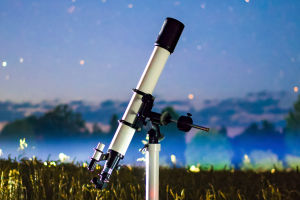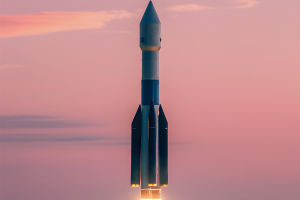In recent years, ultra-light planes have been gaining popularity worldwide. With their simple structure, low cost, and ease of operation, these aircraft are not only an exciting hobby for enthusiasts but also a useful tool for various industries.
From recreational flying to specialized tasks like aerial photography and pest control, ultra-light planes are shaping the future of aviation. This article will explore the key features of ultra-light planes, their benefits, and how they are revolutionizing aviation.
What is an Ultra-Light Aircraft?
Ultra-light aircraft (ULA) are a class of small, lightweight planes, typically weighing no more than 480 kg, with a maximum of two passengers. They are often used for general aviation and are designed to be economical, easy to fly, and operate in low-altitude, low-speed environments. Their flight speed generally ranges from 50 to 100 km/h, with some capable of flying at speeds as low as 44 km/h.
These planes are particularly useful for tasks that require precise, low-altitude flights, such as surveillance, crop spraying, or aerial photography.
Key Features of Ultra-Light Aircraft
Ultra-light aircraft stand out for several characteristics:
Simple Structure: Most ULAs are constructed using lightweight materials such as aluminum alloy, nylon fabric, and foam. They are often powered by small engines, making them easy to build and maintain. Many models are designed with minimal instrumentation, which makes them perfect for amateurs or hobbyists looking to assemble their own planes at home.
Easy Takeoff and Landing: One of the major benefits of ultra-light aircraft is their short takeoff and landing distances. Many models can take off from fields, grasslands, or even dirt roads, without the need for a paved runway. This flexibility makes them ideal for a variety of locations and conditions.
Low-Speed, Low-Altitude Performance: With speeds of around 50-100 km/h, ultra-light aircraft are suited for a range of applications that require flying at low altitudes. They are highly maneuverable and can handle steep climbs and sharp turns, which makes them perfect for surveying, agricultural tasks, or recreational activities like gliding.
User-Friendly: Flying an ultra-light aircraft is relatively easy. These planes have fewer controls and are often equipped with basic flight instruments. With some training, many pilots can learn to operate these aircraft in just a few months, making them accessible to both beginners and experienced flyers alike.
The Economic and Practical Benefits of Ultra-Light Aircraft
In addition to being easy to operate, ultra-light planes are also cost-effective. The construction of these planes is relatively inexpensive, with prices ranging from several thousand to tens of thousands of dollars. This affordability opens up the possibility for individuals or small companies to own and operate these aircraft without breaking the bank. Furthermore, their low maintenance costs and fuel consumption make them an economical choice for both personal and commercial use.
Ultra-light aircraft can also be easily disassembled and transported, which adds to their convenience. When it’s time to relocate or use them for different tasks, they can be packed up, moved, and reassembled quickly. This portability is particularly beneficial for applications that require moving between various job sites, such as aerial surveying or disaster response.
Types of Ultra-Light Aircraft
There are several types of ultra-light aircraft, each suited for different needs and flying conditions:
Fixed-Wing Aircraft: These are the most common type of ultra-light planes. They feature a wing structure that is either single-wing or bi-wing and rely on basic flight control surfaces like ailerons and tail wings. Fixed-wing ultra-lights are highly efficient and well-suited for general aviation tasks.
Rotorcraft: These include ultra-light helicopters and gyrocopters. Unlike conventional airplanes, rotorcraft use rotating blades to generate lift, allowing them to take off and land vertically. They are ideal for hovering and are used for tasks that require stationary flight, like aerial photography or surveillance.
Powered Hang Gliders: These ultra-light aircraft combine the principles of gliding and powered flight. They are lightweight and easy to maneuver, with a simple design that allows for flexible takeoff and landing options. Powered hang gliders are often used for recreational flying and aerial sports.
The Versatility of Ultra-Light Aircraft
Ultra-light aircraft have a wide range of applications beyond recreation. They are increasingly being used in industries such as agriculture, forestry, and environmental monitoring. In particular, they are effective for tasks like crop spraying, forest pest control, and low-altitude mapping. Their ability to operate at low speeds and altitudes makes them perfect for these specialized tasks.
In the wake of natural disasters, ultra-light aircraft have proven invaluable in providing critical information for rescue and relief operations. For example, during the 2008 Sichuan earthquake in China, ultra-light planes equipped with digital imaging systems were used to capture high-resolution aerial photographs, aiding in damage assessment and recovery efforts. These planes’ ability to fly in challenging conditions, such as bad weather, gives them a unique advantage in disaster response situations.
The Future of Ultra-Light Aircraft
As technology advances, the future of ultra-light aircraft looks bright. With growing interest from both hobbyists and businesses, these planes are becoming more sophisticated and versatile. They offer a unique opportunity for individuals to get involved in aviation at a fraction of the cost of traditional aircraft. Additionally, as industries continue to discover the benefits of ultra-light aviation, we can expect to see an increase in their use for professional and commercial purposes.
Whether for leisure or work, ultra-light aircraft are making aviation more accessible than ever before. As their popularity grows, it’s clear that they have a significant role to play in shaping the future of aviation.
The Future of Aviation is Here
In conclusion, ultralight aircraft are paving the way for a new era in aviation, offering an exciting and accessible option for enthusiasts and professionals alike. With their low cost, ease of use, and versatile applications, these aircraft are reshaping how we approach flight. From recreational flying to specialized tasks, ultralight aircraft provide a practical and affordable solution for a variety of needs. The skies are calling—it's time to embrace the future of aviation!

